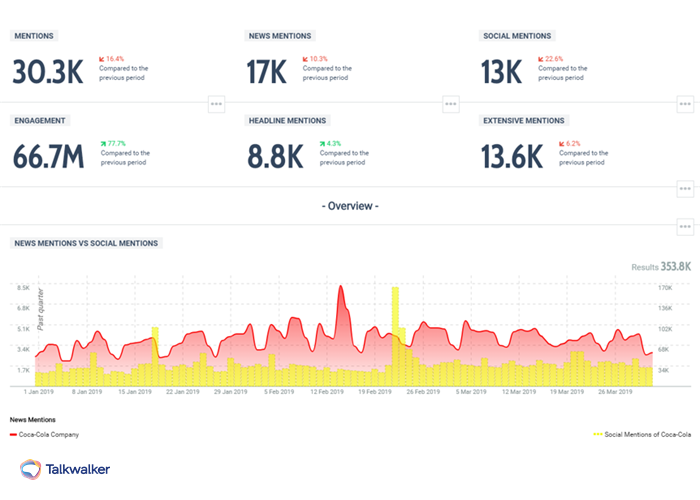Get your campaign cheat sheet!
BEFORE - What to decide before the start of your marketing campaign
Step 1: Look back at previous campaigns
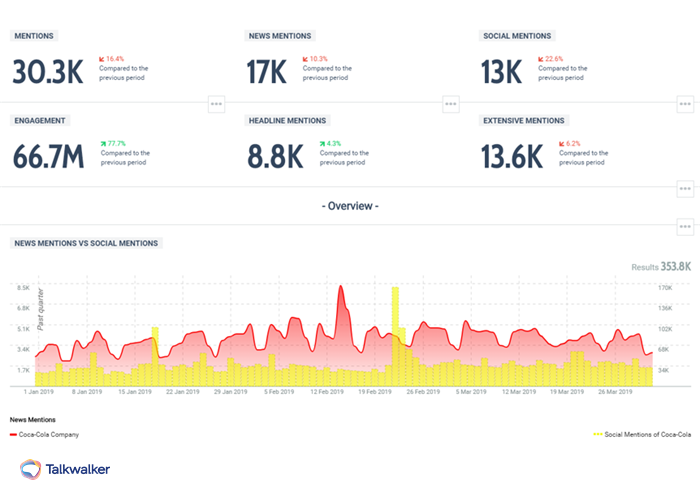
Before you even start your marketing campaign planning, it is time to review what you already know! Your old campaign reports are a great source of insights to understand the marketing tactics that worked for you in the past, as well as those that yielded disappointing results.
By reviewing the key learnings of those campaigns, you’ll avoid repeating the same mistakes, such as using the wrong tone on a given social network, and build on previous successes to find new inspiration and take your upcoming campaign to the next level. For instance, the results of the A/B test of the launch email visual will inform your creative process, that group of micro influencers that generated a spike in campaign mentions, etc.
This will also be the chance to go back over previous campaign results to help you set a benchmark - achievable goals in terms of lead generation, increased brand awareness, etc. However, make sure you’re comparing similar types of campaigns: don’t expect your latest SaaS product launch (Conversation Clusters) to perform as well as an e-book on the social media trends to watch, to take a real-life example from my marketing team’s day to day.
This is also your chance to do a bit of external research - check out the best campaigns of your direct competitors, as well as in your industry as a whole.
Download your marketing campaign template
Step 2: Define success
Once you have the insights from previous campaigns in mind, you should define what a successful campaign would look like, which means setting concrete and measurable goals. It’s easy to focus on the wrong metrics if you don’t know exactly what you’re trying to achieve, or how to measure it.
Define your main objectives, and subsequent campaign goals. In the process, think of the SMART acronym - it also works for marketing campaigns!
-
Specific (simple, sensible, significant)
-
Measurable (literally, which KPIs do you want to hit? Think vanity vs actual impact)
-
Achievable (you or your team should feel like you can actually attain these goals)
-
Relevant (and realistic! Again, look back at what you’ve done in the past)
-
Time-based (how long will the campaign last exactly? When will the reporting happen)
Here are three examples of campaign objectives and connected goals. You can have more than one, with different levels of priority, but should manage your expectations accordingly.
-
Objective: raise awareness in a target market
-
Concrete goal: generate X amount of top tier mentions linked to the campaign in this specific region, with our brand being mentioned in the title of the article.
-
-
Objective: generate demand for a specific product
-
Concrete goal: generate X amount of leads or conversions on the new product page within the time span of the campaign.
-
-
Objective: create new brand ambassadors
-
Concrete goal: get X number of micro influencers to talk about our new product to their community, for an overall X number of mentions and X number of engagement.
-
Get your campaign plan template
Step 3: Define your strategy (and think of something new!)
You’ve got your benchmark, and your SMART goals. Now it’s time to come up with your marketing plan, no matter whether you’ll be promoting a product or service, or even your overall brand.
Answer the following questions in your campaign brief:
-
What is the main campaign messaging?
-
What is your media plan? Which channels will you be focusing on?
-
What are the key campaign deliverables?
-
Blog copy
-
Downloadable content copy
-
Email copy & visuals
-
Landing page copy & visuals
-
Social media messaging
-
Launch video
-
Potential SEO keywords
-
Etc.
-
-
What is the allocated budget (advertising, software, etc.)?
Next, ask yourself: what is the big idea that will make this campaign different or more successful than previous ones? You may have a standard campaign plan that helps you go through all the previous steps quite quickly, but this is where you should invest some brainstorming time - always try to make your campaigns bigger!
"Shot on iPhone" is the best marketing campaign of all time.
It's marketing the ultimate creative output of the device, not the device itself. Just pure brilliance.
— Guillermo Rauch (@rauchg) October 17, 2019
Here are some ideas (including some we have yet to implement here in the Talkwalker marketing team!):
-
Think video content - did you know that 95% of video marketers plan to increase or maintain video spend in 2020, according to this State of Video Marketing report?
-
Recruit a co-marketing partner to help with the development and outreach of the campaign, which will give you access to more resources, as well as a broader community.
-
Find a new way to repurpose your content marketing - you have a blog talking about trends? Illustrate each trend with a comic strip that might go viral on social.
I want to be the campaign master
DURING - Time to monitor results and optimize your strategy
Campaign measurement can prove difficult, given that you will need to monitor several consumer touch-points to understand how your messages are performing, and that the intended results may vary depending on the channel or target audience. This is where an integrated campaign dashboard can really make a difference for your team.
What to include in your campaign dashboard
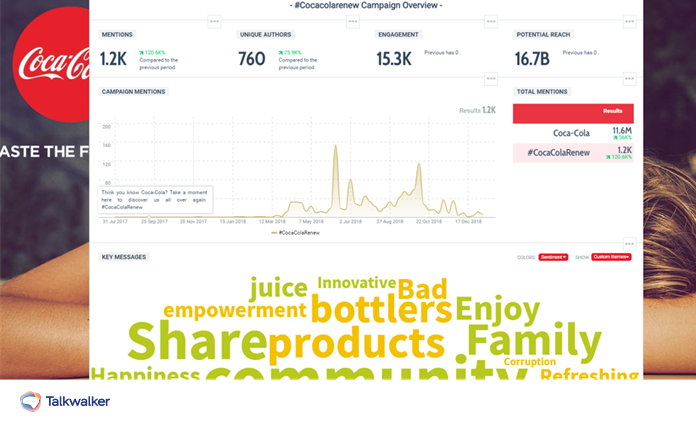
Example of a simulated campaign dashboard
for a Coca-Cola product launch.
Once your campaign has launched, it is important to monitor your KPIs throughout the campaign to understand what’s working and what is not. With this information, you might be able to tweak your strategy a little to boost your results.
You may realize, for example, that your reach is non-existent in a key region or marketing channel, and decide to invest some ad money in the most promising messages to rectify the situation.
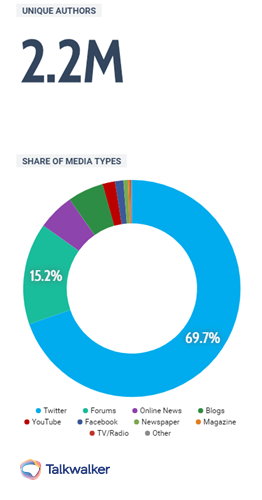
Monitoring a few KPIs throughout the campaign will allow you to focus
your efforts where they are needed.
Some possible KPIs to include in your dashboard (and your SMART goals):
- Number of owned & earned mentions
- Number of unique authors (is it the same 10 accounts producing the lion’s share of your campaign mentions?)
- Engagement
- Potential reach
- Evolution in mentions
- Word cloud of key messages
- Share of media channels
- Share of voice
- Share of country or regions
- Most engaging results on social
- Most engaging results on blogs, news sites and forums
- Website traffic
- Conversion rate of the landing page
No matter what, the KPIs at the top of your dashboard should be connected to these SMART goals you set at the beginning of your campaign planning.
Discover the metrics that matter
AFTER - What to include in your report after the end of your campaign
In order to accurately analyze the result of the campaign, make sure you wait until your action plan is fully implemented before you start your postmortem. Once that is done, there are three different categories of metrics you should be looking at to evaluate the results of your marketing tactics: audience metrics, opinion metrics and business impact metrics, each with their qualitative analysis.
a. Audience metrics - did you reach your target customer?
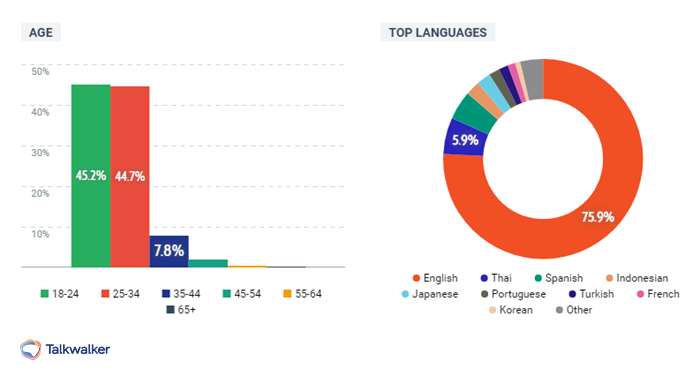
Did your campaign reach the right audience?
In this section of the report, you should take a hard look at the audience that was reached and interacted with your campaign materials.
Main questions to answer in this section:
- How far did your campaign reach? (which people, which regions, etc.)
- Did you break through the noise?
- Did the targeted buyer persona take notice?
b. Opinion metrics - which messages did the audience pick up?
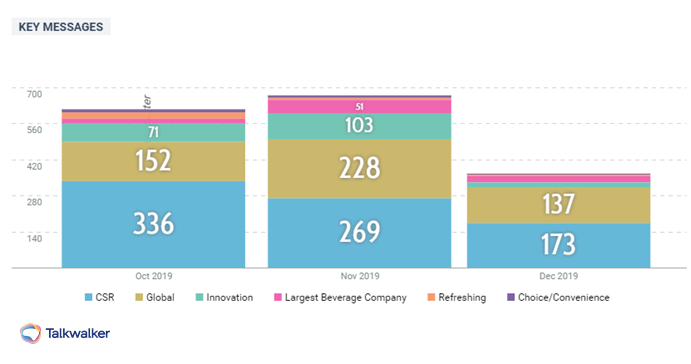
Analysis of the evolution of key brand attributes month on month.
Main questions to answer in this section of your report:
- What are the key messages being picked up?
- How does that compare to what we wanted to communicate?
- Did this campaign have an impact on the overall reputation of our brand?
c. Business impact metrics - has your campaign driven concrete results offline and online?
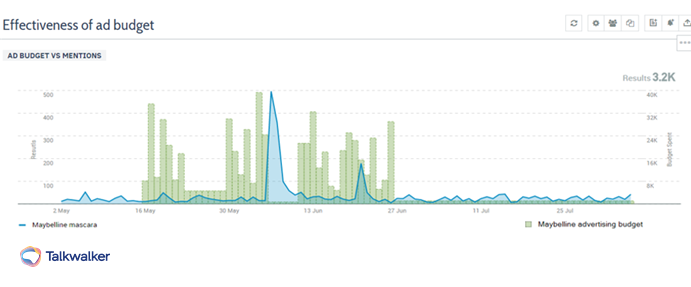
Example of a graph where the ad spent is correlated
to the number of mentions linked to a campaign.
What you should be trying to figure out in this section is whether you managed to change the opinion or behavior of your consumers in the way you wanted. This may translate into more conversions on your product page, more brand awareness in a specific area of the world, or an overall change in sentiment towards your brand.
This section is also the place where you’d review the actual budget you invested in different channels (influencers, paid referral, social media ads, etc.) and calculate the ROI of each based on how much they contributed to your campaign goals.
d. Executive summary or key learnings
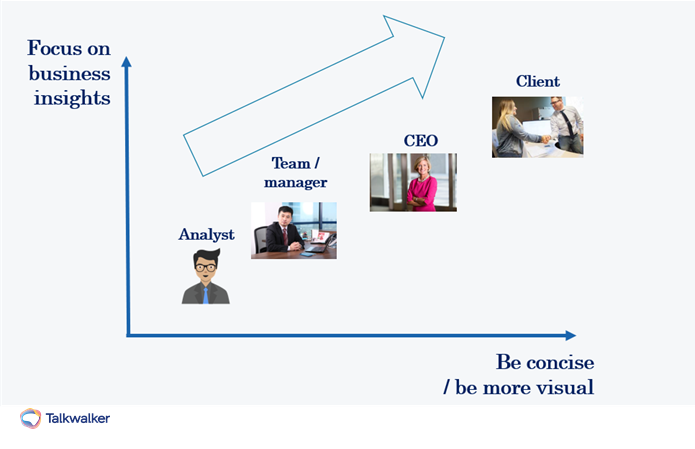
Depending on the reader, your reports should be
more straightforward and business impact-oriented.
This may be the most important part of your report. Depending on your target audience, the level of your analysis will vary. However, there should be at least one slide in your report, at the very beginning or end, that should sum up any important results and learnings of your campaign.
This is the slide your manager or CEO will remember - mine always tells me that I should be able to sum up the results of my campaign on a Post-it, and still be able to show value. And guess what? This is also the slide you’ll be looking at when doing the research for your next campaign!
Did you like these recommendations? Here's a campaign cheat sheet you can print out to keep all aspects of your next marketing campaign in check!

